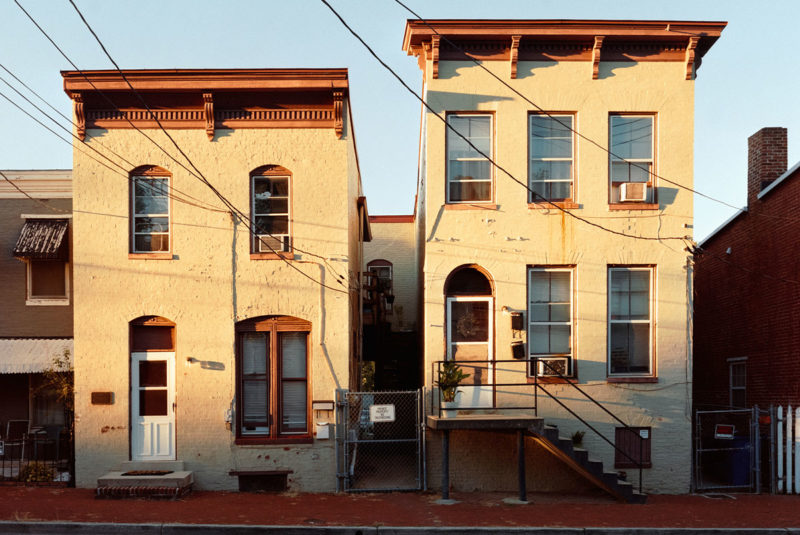Ready To Buy a Home?
Get Approved to Buy a Home
Rocket Mortgage® lets you get to house hunting sooner.
If you’re shopping around for a mortgage, you’ll probably hear words like “conventional” and “conforming” and acronyms like “VA” and “FHA” thrown around by mortgage lenders and loan officers.
It can feel a bit overwhelming – but we’re here to translate.
The most common type of home loan is a conventional loan. This mortgage is used for the largest percentage of home financing in the U.S.[1]
But what is a conventional loan? We’ve created a guide to help you understand what a conventional loan is and how you can qualify for one.
What Is a Conventional Loan?
Explore Your Mortgage Options
What are you looking to do?
A conventional loan is any mortgage loan that isn’t backed by a federal agency like the Federal Housing Administration (FHA), the Department of Veterans Affairs (VA) or the U.S. Department of Agriculture (USDA). Conventional loans can either conform or not conform to the guidelines set by Fannie Mae or Freddie Mac. Although the vast majority of conventional loans do conform to these guidelines.
You can get a conventional mortgage from most lenders, including banks, credit unions and other mortgage lenders and mortgage brokers.
The terms you’re offered on a conventional loan and your ability to repay it is between you and your lender. Because the loan isn’t backed by the government, Uncle Sam doesn’t have a direct stake in the loan terms you’re offered and doesn’t directly need to worry about you making your monthly mortgage payments on time.
Conventional loans are the most common type of mortgage loan available. According to 2022 census data, new home purchases were financed through[1]:
Home is worth it.
The mortgage process can be exciting, and we’ll be with you all the way. Take the first step to owning a home. You’ll be glad you did.
Conventional Loan Requirements
Getting a conventional loan starts with submitting a mortgage application. You can apply through a local, brick-and-mortar bank, an online mortgage lender or a credit union.
No matter where you get your conventional loan, the lender will verify that you meet their criteria.
Credit score
To qualify for a conventional loan, most conventional lenders require a credit score of 620 or higher. The better your credit score, the more favorable rates you’ll get.
Debt-to-income (DTI) ratio
Lenders will look at your debt-to-income (DTI) ratio to see how much you owe compared to how much you earn. To qualify for a conventional loan, most lenders prefer a DTI of 50% or less, though some lenders may offer some flexibility.
Down payment
Back in the day, a 20% down payment was standard.
With the growth of the housing market and lower interest rates on savings accounts, today, lenders are willing to accept as little as 3% down on conventional loans.
Private mortgage insurance (PMI)
With a conventional loan, if you pay less than 20% down, lenders are likely to charge you more in interest and require you to pay private mortgage insurance (PMI).
PMI protects lenders in case borrowers default on their loans. It’s typically paid as part of your monthly mortgage payment, but you can pay it upfront with your closing costs.
Once you reach 20% equity in your home, you can remove PMI from your mortgage.
Proof of income and employment
Lenders will verify that you earn enough to make your regular monthly mortgage payments. To confirm, they’ll need proof of income. Lenders will typically request recent pay stubs and W-2 forms.
Loan limits
For conforming conventional loan borrowers, the property you’re financing must fall within current conforming loan limits.
In 2023, the limit for 1-unit properties is $726,200, an increase of $79,000 from $647,200 in 2022.[2]
Types of Conventional Loans
Now that you know what a conventional loan is, it’s time to look at the different types of conventional loans that are out there.
Conforming loans
Conforming conventional loans meet standards set by Fannie Mae and Freddie Mac, which are publicly traded government-sponsored enterprises (GSEs) managed by the Federal Housing Finance Agency (FHFA).
Fannie Mae and Freddie Mac aren’t federal regulators – and they can’t tell lenders what to do (although they can refuse to buy loans from lenders if the loans don’t meet their requirements) – but they have enormous power because they back trillions of dollars in mortgage loans.
It can be easy to get conventional and conforming loans mixed up, so let’s get two things clear:
- When anyone talks about a conforming loan, they’re talking about a conventional loan that meets the guidelines of Fannie Mae or Freddie Mac.
- The vast majority of conventional loans are conforming loans.
Fixed-rate mortgage loans
Thanks to their long-term stability, fixed-rate mortgages are the most popular type of conventional mortgage loans. Specifically the 30-year fixed mortgage, which has been the most popular mortgage in the U.S. for decades.
With a fixed-rate mortgage, you always know what you pay each month. The interest rate stays the same over the life of the loan. You borrow a predetermined amount of money from a lender and pay it back at a fixed interest rate over a fixed period of time.
Adjustable-rate mortgage loans
With an adjustable-rate mortgage, the interest rate is variable, which means it can go up or down over the life of the loan.
Adjustable-rate mortgages usually offer a lower-than-average, fixed interest rate for the first 3 – 10 years. After that, the rate adjusts based on terms you and your lender agreed to in advance.
Jumbo loans
Jumbo loans are a type of conventional loan for borrowers who want to borrow more money than the limits set by Fannie Mae and Freddie Mac in the area where they are purchasing the property.
For 2023, the highest-value area ceiling loan limit for 1-unit properties is $1,089,300.[2]If you want a loan above this amount, you’ll need to get a jumbo loan.
How Are Conventional Loans Different From Other Types of Loans?
Conventional loans are different from government-backed loans in a few different ways. The biggest difference is that conventional loans aren’t directly insured by any government programs.
Conventional conforming loans also have specific loan limits they must follow and more stringent credit and financial requirements than government home loans.
Take a look at the chart to see how requirements differ for each type of loan.
| Conventional | FHA | VA | USDA | |
| Minimum Down Payment | 3% and up | 3.5% or 10% | 0% | 0% |
| Minimum Credit Score | 620 | 580 (for 3.5% down); 500 (for 10% down) | No VA requirement; varies by lender | No USDA requirement; varies by lender |
| Maximum DTI | 43% or less | 50% or less | No VA requirement; varies by lender | 41% or less |
| Mortgage Insurance | Not required with a 20% down payment or can be canceled when a borrower reaches 20% equity in their home | Pay mortgage insurance premium (MIP) for the life of the loan with less than 10% down payment or pay MIP for 11 years with 10% down payment or higher | One-time VA funding fee that ranges from 1.4% to 3.6% | 1% upfront guarantee fee and a 0.35% annual fee |
Conventional loans and government-backed loans are set apart by other requirements.
For example, FHA and VA loans require the property to be your primary residence. Homes purchased with a USDA loan must be located in a qualifying rural area.
What Are the Benefits of Conventional Loans?
While the use of government-backed loans has grown since 2008,[3] there are lots of reasons why conventional loans are more popular.
Flexible terms
While FHA loans tend to have 30-year or 15-year terms, conventional mortgage loans allow greater flexibility with the length of a loan.
Borrowers can borrow for any term from 8 – 30 years – they can choose the term that best fits their financial needs.
Mortgage insurance can be canceled
Conventional loans (with less than a 20% down payment) and FHA loans require mortgage insurance, but only conventional mortgages allow you to cancel private mortgage insurance (PMI) once you’ve reached at least 20% equity in your home.
Available for many property types
You can use a conventional mortgage for many types of property, including second homes, vacation homes or rental properties.
One of the limits of FHA is that they can only be used for primary residences or other properties that meet FHA requirements, such as FHA-approved condominiums or FHA-approved multifamily units.
Higher borrowing limits
In 2023, the FHA loan limit for most areas is $472,030[4], while the conforming conventional mortgage limit is $726,200[2]
Conventional Loans FAQs
For most borrowers with decent credit and low debt, the answer is yes. But ultimately, it depends on your situation and financial goals.
After the 2008 financial crisis, government-backed mortgage lending spiked.[3] The number of borrowers taking advantage of FHA and VA loans increased by as much as 300%.
Since then, Fannie Mae and Freddie Mac have created new conventional loan programs (like Fannie Mae HomeReady® and Freddie Mac Home Possible®). These loan products offer borrowers many of the benefits of nonconventional mortgages without their tougher eligibility requirements.
But a conventional mortgage loan may not be right for everyone. It’s important to research all your options to see what works for you and your home buying goals.
You may be eligible if you have a steady income, a credit score of 620 or higher and aren’t overburdened with debt.
The best way to find out for sure is to talk to a mortgage lender.
Conventional loan rates are typically influenced by economic forces and market conditions and may vary by lender. Your overall financial situation, such as your credit score and DTI ratio, will determine whether you qualify for the best interest rates.
You’re on the Road to Homeownership
If you qualify for a conventional mortgage, you should be able to get preapproved and begin your homeownership journey.
If you don’t qualify, your mortgage lender can help you figure out if you qualify for a different mortgage that better fits your needs.
Where there’s a will, there’s a way to finance it!
The Short Version
- A conventional loan is any loan that isn’t backed by the federal government
- Compared to most government-backed loans, you’ll need a slightly higher credit score and a strong financial history to qualify for a conventional loan
- Conventional loans are widely available through banks or online lenders and offer competitive interest rates and flexibility
U.S. Census Bureau. “New Houses Sold by Sales Price: United States.” Retrieved January 2023 from https://www.census.gov/construction/nrs/pdf/quarterly_sales.pdf
Federal Housing Finance Agency. “FHFA Announces Conforming Loan Limits for 2023.” Retrieved December 2022 from https://www.fhfa.gov/Media/PublicAffairs/Pages/FHFA-Announces-Conforming-Loan-Limits-for-2023.aspx
NAHB. “Conventional and FHA Mortgages Finance 90% of New Home Sales in Q1 2021.” Retrieved December 2022 from https://eyeonhousing.org/2021/04/conventional-and-fha-mortgages-finance-90-of-new-home-sales-in-q1-2021/
U.S. Department of Housing and Urban Development. “MAXIMUM MORTGAGE LIMITS 2023.” Retrieved December 2022 from https://www.hud.gov/program_offices/housing/sfh/lender/origination/mortgage_limits




